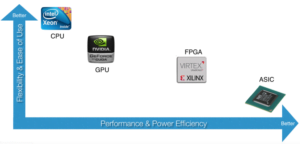Amateurs sit and wait for inspiration, the rest of us just get up and go to work.
Stephen King
POW or POS? That is a question many of us ponder as we try to decide, if we are going to get involved or invest in one of the myriad of newer crypto currencies or projects. But what does this actually mean? Proof of work or POW was where it all started back in the mists of time with HashCash an unsuccessful precursor to Bitcoin. On proof of work projects, CPUs/GPUs/ARM/FPGAs or ASICS perform calculations to encrypt (safely store) transactions and generate new coins (mine). Proof of stake came about a couple of years after the launch of bitcoin in the form of PeerCoin as the first successful implementation. It is basically where you prove (also by performing calculations) that you own a slice of a project and where the assumption is made that owning a slice should entitle you to future proceeds. To make matters worse, recently 2018-19 multiple projects have started labeling themselves as Dpow or Dpos we will touch upon those a bit later in this piece.
POW or proof of work has evolved considerably since the start of Bitcoin. It started as something where you could hit multiple 50BTC blocks in a day with just a cpu core or two on a laptop. From there it went to more and more extreme overclocking of small socket i7 CPUs to pooled coin mining on Slush pool. Then not long after that, Artforz released his GPUmining video on youtube and the whole mining boom started. About a year and a half past that point, enormous stacks of cashregister boards started being sold to compete with the GPUminers of the time, the first FPGAs had arrived on the mining scene. Roughly another year and a half past that point, the BTC hash rate started increasing a lot faster than what could be explained by new GPUs and FPGAs, ASICS had arrived GPUs and FPGAs slowly drifted into other fields of mining, Litecoin and Primecoin for example.

A lot has happened to POW in the last couple of years, development has in some cases successfully reversed the evolutionary cycle with such algorithms as RandomX, BurgerHash and a few other variants so CPUmining which for quite some time was a sideshow at best has become a pretty decent mining industry of its own. On more common algorithms, GPUs are battling it out with FPGAs for dominance and the trend at the moment is pretty clear, until someone starts releasing high bit complex coin mining algorithms, FPGAs are winning. ASICs still sit as the kings of the castle in terms of hashrate dominance however with the current development speed of FPGAs that may also come to change.
Dpow, distributed proof of work, is another relatively new thing where chains utilize data from a second chain to incorporate into their own network/chain giving it added security from 51% attacks (a malicious miner controlling 51% of hash attempting to subvert the main network). This is a very valid and effective approach in securing a network as the 51% attacker would need to subvert both networks at the same time which would increase their costs exponentially.
Here is an excellent interview with LOOTZ from crypto core radio, where we get into mining in more detail and how it relates to the Raptoreum project and our solutions to some of the problems with the evolution described above.
POS or proof of stake has not come as far in terms of evolution as POW and is still vulnerable to multiple exploits. The first propelry successful implementation was PeerCoin where every other block on the chain is handled by proof of stake as opposed to proof of work. The next evolution came along in the BLK and POT coins that completely discarded POW in favour of people having to buy a stake and use it to gain more. Dpos is a somewhat different animal fathered by one of the biggest scammers but most brilliant coders in crypto history, Dan Larimer. Here the D stands for delegated and essentially means that different types of nodes perform different types of functions on different versions of the Graphene network, some nodes act as witnesses to trades and record that etc.
One of the main drawbacks of POS is that the verification method is essentially similar to POW meaning that if you add in a few lines of extra code, you can suddenly “mine” a pos coin using an ASIC or GPUs to speed up the calculation rate. If you look at the POS difficulty of most POS networks, you will see if is well above what ought to be possible with just CPUs/RaspberryPIs etc performing calculations on it. This is even the case for most of the larger POS networks in case some of you are wondering how 10 coins get stakes daily as opposed to your 1k+ in your staking wallet.
Have fun and DYOR,
Bigpiggy01

